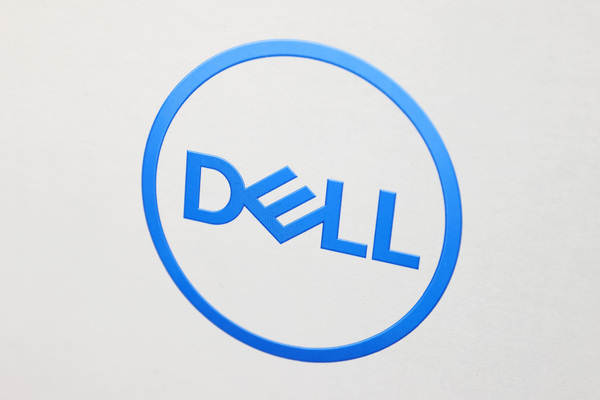Winning in the B2B World Takes B2C Strategies
Sponsored by Ingram Microby Paul Bay, CEO, Ingram Micro
Today’s business-to-business (B2B) sales cycle is not just long, it fails to meet the changing needs and expectations of customers, especially within the technology industry. Applying proven consumer sales strategies to the B2B market can add personalisation and improve engagement.
Sales in the B2B technology industry can be time-consuming. A simple order can require multiple human touchpoints, taking days or even weeks and putting more distance and friction between the buyer and seller. Adding more complexity to the B2B sales cycle is the increasing variety and number of decision makers involved in today’s B2B technology purchases – many of whom have no technical expertise.
Now, cross over to the world of business-to-consumer (B2C), where the platform experience has taken hold – simplifying sales, personalising purchases, tracking shipments and raising expectations everywhere. The ease, efficiency and personalisation of doing business via the B2C platform model is putting increasing pressure on B2B companies to digitally transform how they work, encouraging the adoption of a “B2B2C” strategy that focuses on the customer and encourages businesses to engage in more interactions, rather than transactions.
So, how can a B2B business years or even decades in the making successfully transition to a modern digital playbook?
Focus on the customer
The first step is to look inward and identify the key goals that you want to achieve and the business outcomes that you want to drive with your digital transformation.
When doing this, it is important to not overcomplicate the plan. Rather than clouding the picture with too many objectives and initiatives, keep the focus on your customers – and only pursue the options that will most directly improve their experience working with you.
Get your team’s buy-in
To make your digital transformation work, you must change how your teams think about being a digital business. It starts at the top with your CEO and C-suite.
Your teams must understand the overall vision for the transformation and be able to clearly articulate its value and benefit to your customers. You must repeat the vision often and reinforce it through specific stories and use cases. Your team members must live this vision daily and see a clear, consistent path to achieving the desired outcomes, such as customer retention, sales growth, or increased revenue and profitability.
Understand, and change, your customer’s mindset
A recent report from Gartner shows that as the number and type of decision makers involved in technology purchases has grown, buying expertise has dispersed, resulting in technology buyers who lack a clear understanding of a specific technology’s value. This leads to a failure to move forward with a purchase or – perhaps more concerning – post-purchase regret.
The key to addressing this issue is understanding your customer’s mindset and moving them to see that the value of a technology is the enhanced experience and improved value it can create for their customers, employees and business partners – that it’s not technology just for technology’s sake. By focusing on the business outcomes a technology can drive for your customers – and for their customers as well – and involving them in setting and executing strategy, you can help ensure their needs are met as their business evolves and transforms.
Connecting your vision to your customers
As you refine your digital initiatives, implementing them in day-to-day operations involves examining your sales and service architecture and determining what needs to change to communicate your vision more effectively to your customers.
We took this approach at Ingram Micro – looking inside and across our industry at the transactional method traditionally used to connect technology products with customers and we determined that a new model was needed.
Enter Ingram Micro Xvantage, a digital experience platform designed to remove friction and move business from transactions to more personalised interactions. We are applying the best B2C experiences to the B2B market – moving away from standardised offerings and providing a customised approach that customers already enjoy when they’re shopping with a favourite e-commerce site.
The technology behind our Xvantage platform embraces what our CDO Sanjib Sahoo calls the “spirit of digitisation”. We use AI and machine learning models to gain insights, applying the data to deliver a more personalised experience to the customer. Doing so eliminates the friction and complexity expected in B2B technology transactions. The platform is an industry first, and we see it as an opportunity to simplify and make the millions of transactions in our industry much more consumer-friendly.
The data insights generated by Xvantage offer another advantage to our industry – helping to identify new business opportunities by more closely pinpointing where there are service gaps that need addressing. Leveraging data allows us to improve the types of recommendations we make, showing the full value that a purchase, solution or service can have for a customer. It also makes it easier for customers to buy the needed products. These are the foundational elements to becoming a B2B2C company.
When your customers consider you an extension of their team, you win. And when you show them how technology helps you grow together, you both win. Everyone wins when your B2C-modeled digital transformation efforts enhance the experience and strengthen the ecosystem.

Business Reporter Team
Most Viewed
Winston House, 3rd Floor, Units 306-309, 2-4 Dollis Park, London, N3 1HF
23-29 Hendon Lane, London, N3 1RT
020 8349 4363
© 2025, Lyonsdown Limited. Business Reporter® is a registered trademark of Lyonsdown Ltd. VAT registration number: 830519543





